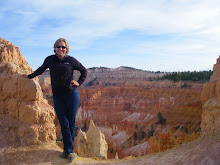As if global warming weren’t scary enough already, rising temperatures and sea levels, droughts, storms, and island villages falling in the waves, we’ve got another menace lurking just under those encroaching waves. The carbon dioxide we’ve been pumping out since the industrial revolution isn’t just accumulating in our atmosphere and trapping radiant heat, about half of all the anthropogenic carbon produced has been absorbed by the oceans.
That means that if it weren’t for the oceans, we’d be facing twice the impacts of atmospheric carbon than we are now, leaving scientists and policy-makers to celebrate the saving grace of the ocean’s carbon sink. It turns out however, that the oceans can’t just passively soak up carbon like a sponge and continue unaffected. It’s like knowing that although a frat boy can pound down ten beers in an hour and still walk away to flirt with the nearest short skirt, he’s not going to escape the consequences of a hangover the next morning.
Our oceans are approaching the inevitable hangover as we speak, they’ve taken on more than they can handle, and like many a frat boy’s who’s had one too many, the oceans don’t know how to stop. At the water’s surface, gases are exchanged with the atmosphere. When the atmosphere has more CO2 than the water, the oceans absorb it. In the water, a chemical reaction called the carbon buffer takes place, with the dissolved carbon dioxide reacting with the water to create a weak acid. This acid then breaks up, releasing hydrogen ions and raising the pH of the water. The hydrogen ions are the dangerous part of this equation, because they bind tightly to carbonate in the water.
Carbonate is an important part of the oceans chemistry, because when it isn’t being stolen by increasing armies of hydrogen ions, it binds with calcium to make calcium carbonate. Calcium carbonate is used by organisms like mollusks, crustaceans, and the phytoplankton that provide the base of the marine food web to make their shells and structural support. When the acidity of the waters increase, the hydrogen steals the carbonate away, so that it is no longer available to these organisms, and their shells will even start dissolving.
It’s already happening. The global oceans have decreased in pH by about 0.1, a 30% increase in hydrogen ions. Calcium carbonate is less stable in cold water, so the polar regions are feeling the effects faster. Alaska’s waters will be without sufficient calcium carbonate by the end of the century, if current Co2 emissions continue, and the global oceans could experience a drop in pH of 0.5. That kind of drastic shift in ocean chemistry could permanently alter the ecosystems, especially as the environment gets too acidic for the phytoplankton that support the entire system. We need to start paying attention to all the effects that our out of control fossil fuel use is having, not just above the surface, but below as well, if we’re going to save our marine ecosystems from a threat this serious. Because unlike a hangover, the effects of absorbing too much CO2 will take thousands of years to cycle out.
“For an organism that lives in the water, the two most important factors are temperature and acidity. So this is just a profound, profound change. It is going to send all kinds of ripples through marine ecosystems because of the importance of calcium carbonate for so many organisms in the oceans, including those at the base of the food chain….you could have food chain collapses, and fisheries ultimately with them."
–Thomas Lovejoy
Heinz Center for Science, Economics and the Environment
4 years ago

